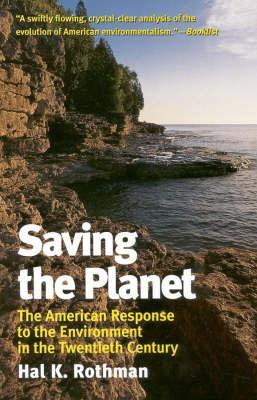Rothman, Hal K. Saving the Planet: The American Response to the Environment in the Twentieth Century. Chicago: Ivan R. Dee, 2002. Rothman begins his story with a discussion of the 1890s and the origins of the conservation movement. He argues that this crucial decade marked a point when the closing of the frontier and the rude emergence of industrialization created the conservation movement. The next three chapters cover the progressive era, with most emphasis placed on Theodore Roosevelt and the Antiquities Act of 1906. Rothman draws little distinction between the big business emphasis of the 1920s and the big government actions of the 1930s because both were top down approaches to conservation and natural resource usage where decisions were made by a tiny elite without popular input. The fourth chapter dwells on the 1950s and the emergence of a new environmentalism propelled less by the efficient management of resources, and more by concerns relating to aesthetics and the quality of life. The next chapter, “The Rise of Aesthetical Environmentalism,” covers the turbulent decade of the 1960s when social upheavals had a pronounced effect on the way Americans came to view the environment. Rothman argues that the emerging post-World War II environmental movement returned the emphasis to the individual under the assumption that what was good for one was good for all. The final three chapters move away from a chronological order and treat racism and environmental degradation, the Sagebrush Rebellion and the Wise Use movement, and strategies for the future of environmentalism. (Text adapted from an H-Net review by Gregory J. Dehler.)
- Rothman, Hal K. The Greening of a Nation? Environmentalism in the United States Since 1945. Fort Worth, TX: Harcourt, Brace, 1998.


